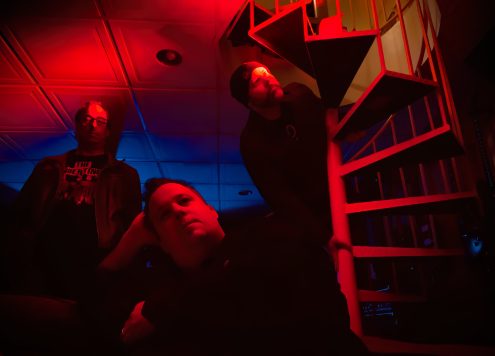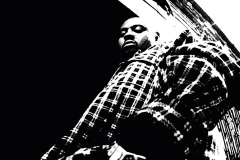Hailing from the Southwest, Tucson-based Hip Hop group Jivin’ Scientists (emcee James “Runt” Owens, producer Ryan “Phen” Troncoso and producer Nate Smith) have released a new music video for the track “Thirsty” off the group’s 2015 album of the same name.
<iframe width=”560″ height=”315″ src=”https://www.youtube.com/embed/Qul8yRxMMfA” frameborder=”0″ allowfullscreen></iframe>
Produced by Albuquerque creative company, Concept Flux, the nearly 12-minute video is both a thought-provoking short film and music video aimed at taking the viewer on a journey through lost love.
Along with cinematic imagery, the three-song montage uses emerging technologies like projection mapping and depth sensors, which are virtually unheard of in the music industry. Director Phillip Torres took drew inspiration from acclaimed directors such as Terry Gilliam, Michelle Gondry and Darren Arronosky.
The story starts with emcee Runt falling in white space, which can be interpreted as his memory, and then lands in a truck that takes him to an undisclosed drop off. Along the way, he raps in the back of the truck bed and is juxtaposed with the imagery of him lying in bed with his ex-lover.
“The realistic turns futuristic digital and we eventually see his lover disperse into particles and fade away, like she did from him,” Torres explains. “They embrace in real life and in the digital world, which may be a comparison for the digital world of documentation we have of people and how it’s closely related to being almost artificial.
“Technically, we wanted to capture the love scenes in a more subjective way so they would mesh well with the digital scenes,” he adds. “We projection mapped onto the subjects faces to get the cool effect and then we used VFX to make her disappear.”
The next scene in the film shows Runt getting picked up in the desert by a ’59 Impala. Runt decides a surreal journey is what he needs to be closer or further away from his lover, so he goes on a visual trek. The scene uses projection mapping and rear projections to make it more visually intriguing.
“The final scene is the most cinematic,” Torres says. “It’s the juxtaposing of his real memory of her leaving, the final morning and a dream world where things are beautiful, but ultimately she still leaves him, painting a picture of true and realistic love.”
Jivin’ Scientists short film for “Thirsty” taps into unconventional cinematic tools












Social Media